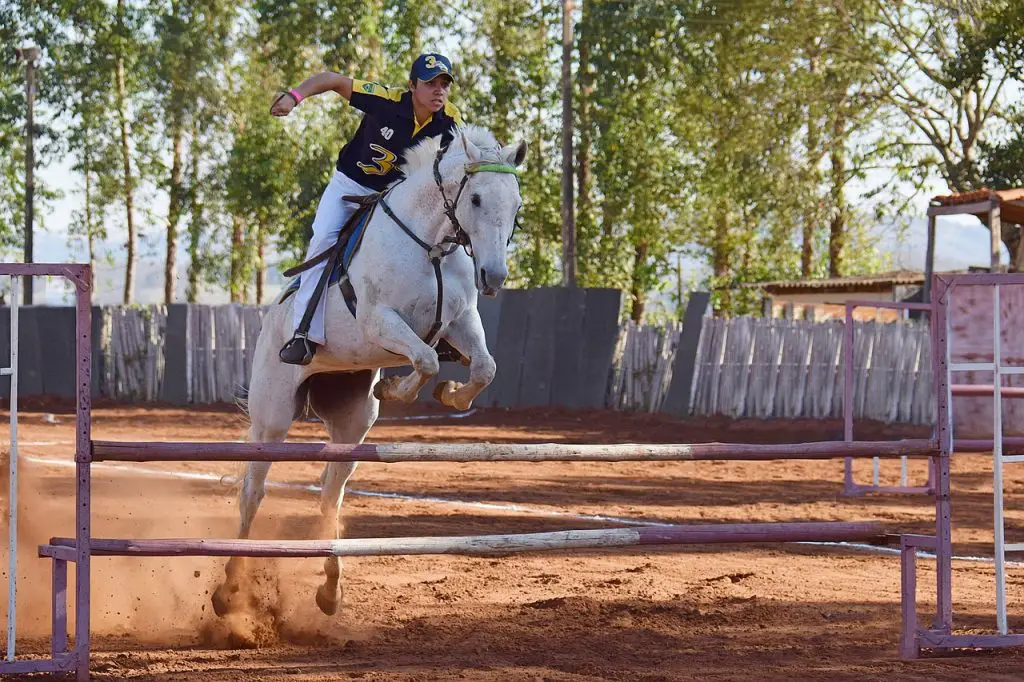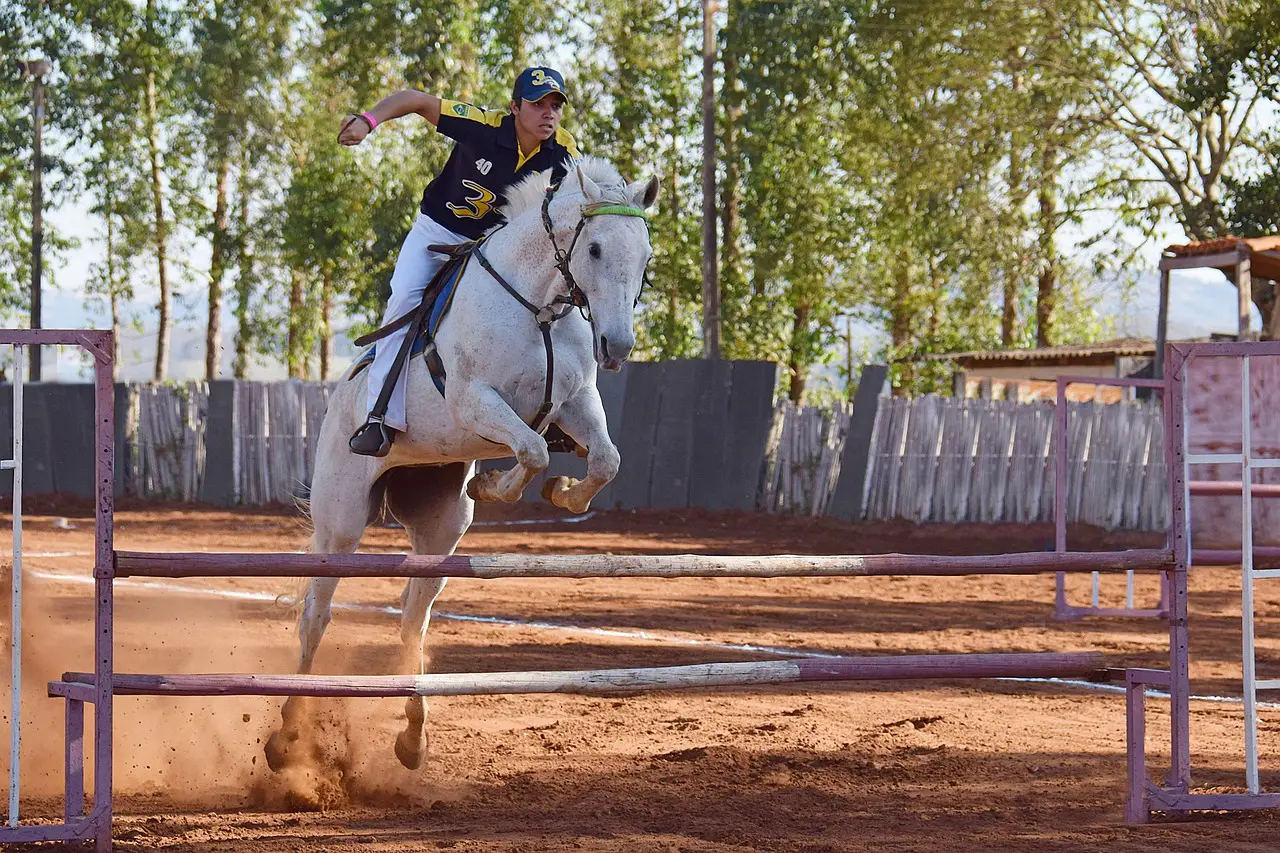Last Updated on March 4, 2022 by Allison Price
These great tips will help you get to the top
Polework is suitable for all. Polework can be beneficial for all horse riders, including dressage riders, jumpers, eventers, and reining riders.
Polework is a great way to increase your horse’s flexibility and strength, engage their hindquarters and improve their cadence and expression.
These are three exercises you can add to your riding routine. These exercises can be done regularly to see improvements in strength, fitness, and musculature for your horses.
When polework is involved, it’s important to build up slowly. Even walking poles can be strenuous. Your horse’s muscles will feel the strain, even if they don’t seem to be aching.
You’ll quickly
See the benefits
Please complete the following form
Strength
Exercise 1: Poles on a walk
Six poles should be placed in a straight line. Start with your horse flat on the ground. If they are weak or if you are unsure about polework, then aim to raise each pole one-side at a time.
You can estimate distances from walking poles if you don’t own a tape measure. Use four feet and place one foot in front of the other, as if you were walking on a tightrope. The distance in metres would be between 0.8 and 0.9 metres.
There is no suspension during the walk. Therefore, the muscles are required to lift the feet above the poles. This is a great way to strengthen the core and hind ends, and make the pelvis more mobile. It also increases the ability to bend the hips and engage the hocks.
Exercise 2: Trot with S-shaped poles
To do this, you’ll need at most 8 poles. Place them in an S-shape. As a rough guide, five ‘tightrope steps’ from the middle to the middle of each pole are a good idea. One ‘big’ human step is also a good guess. Each curve of the S will be made fan-shaped by the poles.
After your horse has warmed up, you can trot along the poles with a good trot. To ensure your horse bends through the S curves, you will need to guide him using your legs and seat.

You can practice polework with your horse if he isn’t familiar with it. Do this 2-3 times per side before you move on. You can increase the repetitions as your horse gains fitness and work towards lifting the poles.
You’ll notice your horse must engage his hind end as you ride through the course. As a result, your horse should be more active and bouncy. This exercise is great for demonstrating one-sidedness and lack of suppleness. Your horse might struggle to switch bend, and it may be harder to activate one side or the other.
This is a difficult exercise so don’t despair if you have trouble. You can always ride the S shape, then circle back to do the second half.
Exercise 3: Canter poles with a fan
Many people can do the “clock face” canter pole exercise using four poles in a circle. However, fewer riders seem inclined to use the fan shape for cantering. It’s often used with trotting poles.
You will need to set up three to four canter poles on a fan with a distance of approximately three steps between the middle of each pole and the middle of the next. This means that the distance between the poles on the outside and inside is greater.
The distance from the middle to your horse’s heart should be easy enough for him to canter in his normal rhythm.
You can work in a circle and canter over the middle of each pole as you reach the end of the circle. You should keep your horse in a rhythm, bend and canter the poles with no jumping or rushing. Repeat this process on both sides. If your horse responds to your aids well, you can use the outer ends of your poles for a longer canter or the inner ends for an organized canter.
You can increase your proficiency by collecting on each circle, extending the length of one circle, raising alternate ends and adding more poles. If you are really keen to push yourself, you can add small verticals to every two to three poles.
This is a great exercise for developing push from the hindend and asking horses to lift their forehands and engage their core.
To maintain a steady rhythm, the horse must balance himself so he doesn’t fall on the forehand.



